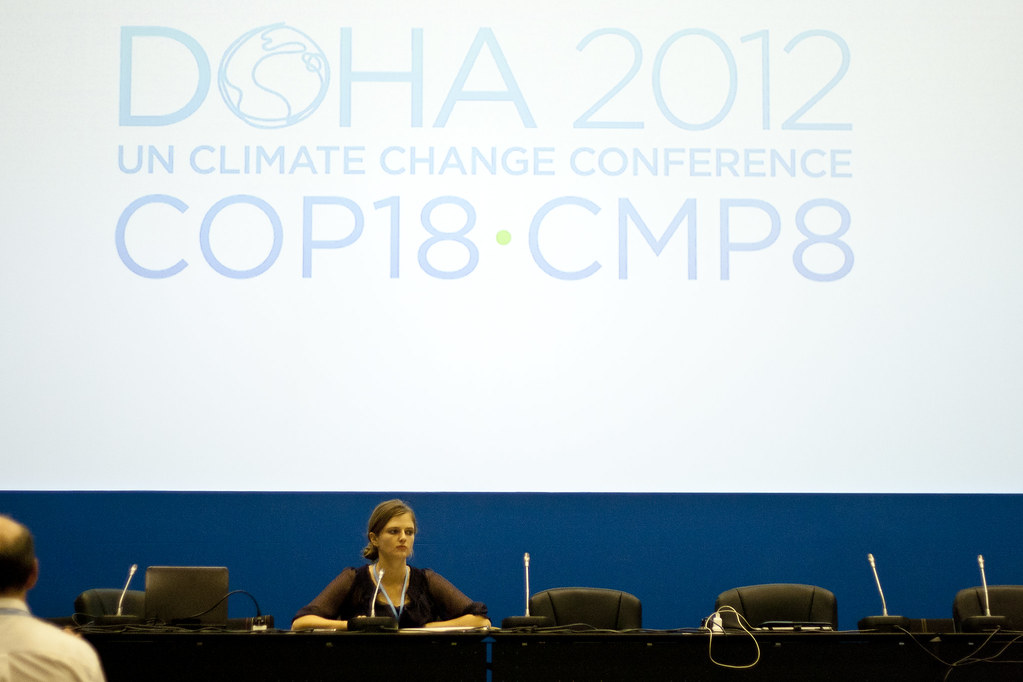India’s Energy Future and Australia’s Role
Sophie Trevitt | December 7, 2012.

Are you confused about Australia’s stance on climate change? You aren’t alone. The global response to the climate crisis is rather like a poorly managed hospital. We’re piling into the emergency room, mopping up the blood as our patient haemorrhages at the table – and we’re fast running out of chux. What we really need to do, is stem the bleed at the source and leave the cleaning up until after our patient has stabilised.
This is the irony of having the climate negotiations in Qatar. Qatar is the world’s largest exporter of liquefied natural gas and the 16th largest supply of crude oil. Hosting the negotiations here highlights our collective failure to tackle to the root of the climate change problem – fossil fuel exports. And, Australia is no exception.
Earlier this week, Indian investors of the Carmichael Coal mine project in the Galilee Basin, Australia, announced that they would be going forward with the project and expected it to make its first India-bound export in January 2016. The opening of the Galilee Basin’s so called “mega mines” flies in the face of declarations that Australia’s resource boom is over. It’s undoubtedly welcome news to the 25,000 future employees in Queensland who will be required to pull off the epically proportioned mining project, and a welcome reassurance to the mining companies who worried their business would dry up with the advent of the mineral resources tax.
When fully operational, the Carmichael Coal mine project alone is expected to become the seventh largest contributor to carbon emissions in the world. This is unwelcome news to scientists, developing countries, small island nation states and people all over the world who are concerned with survival in a four degree warmed world. Greenpeace reports that the mine can be expected to release 705mn tonnes of CO2 into the atmosphere.
For India, the coal mine means even more than the 25,000 local jobs and $1 billion injected into the Queensland economy annually. It means 160,000MWs of new electricity capacity that will allow for industrialisation and India’s long term growth. Currently, in order to manage the grid, India’s demand so far exceeds supply that entire sections of the country are rotationally shut down and almost a fifth of India remains unelectrified. Power supply needs to be ratcheted up in order to build a manufacturing industry with the capacity to pull India’s population out of poverty. Whilst the UN recognizes the right to development and equal opportunity; tensions emerge when these rights butt heads with the world’s collective right to a safe climate future.
Arguably, any country’s “long term growth” loses relevance if we contemplate the destructive capacity of the long term possible impacts of climate change.
The UN climate talks are notoriously slow because they involve the immensely difficult juggling act of balancing national interest with global necessity. Each of the 196 countries in attendance is committed to preventing dangerous climate change. But, for those not dealing with the immediate threat of submersion; the commitment is tempered with the reluctance to act first.
What the defenders of India’s right to development may have lost sight of is that economic growth and growing a green economy are not necessarily mutually exclusive. Renewable energy is a viable alternative to coal and could satisfy India’s base load power problem. India has tripled its renewable energy production over the last five years. With the application of collective ownership principles we can already see the price of solar energy dropping all over the world. The biggest barrier India faces are the large start-up funds necessary to expand the renewable energy sector that would provide India with far more energy security than fossil-fuel dependence. Instead of exacerbating the problem of climate change that will hit poor countries like India the hardest, Australia could step up to its climate financing responsibilities and put money for adaptation on the table.
As we enter the final hours of Doha, Australia has the opportunity to do more than simply pay lip service to international efforts to mitigate climate change. Australia’s recently released Energy White Paper is a hopeful indicator of the significant role renewable energy will play in Australia’s future. The next step for Australia is to leave coal in the ground and work with developing countries like India to help grow a booming renewable energy industry that can supply the Asia-Pacific region with affordable and abundant power.
By Sophie Trevitt, photo by Laura Owsianka.











comment